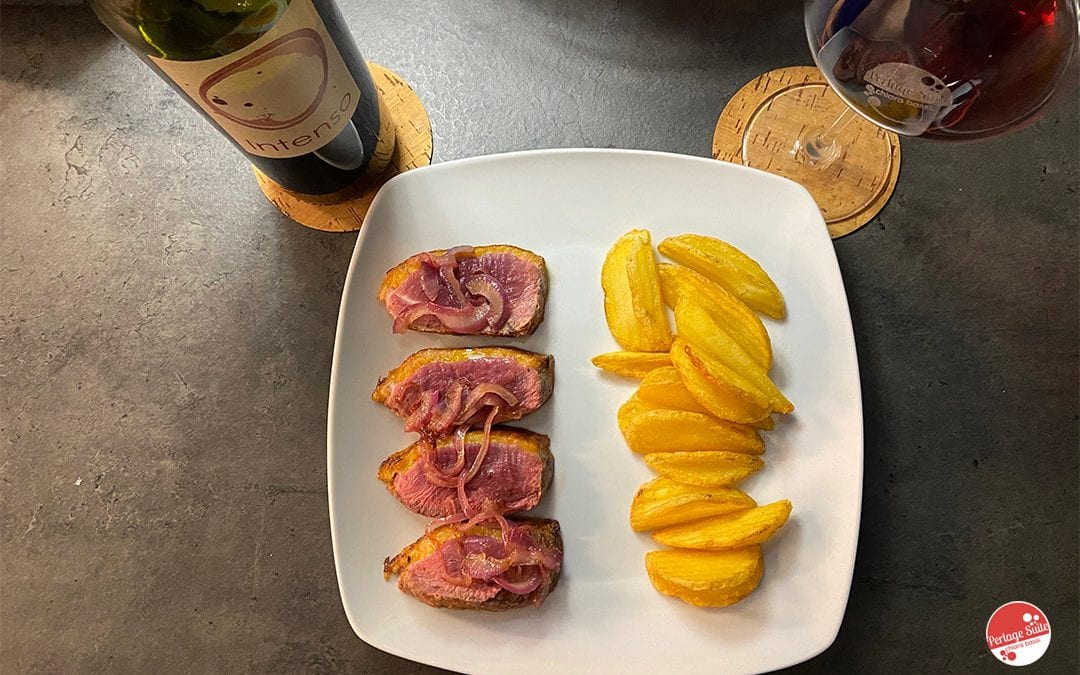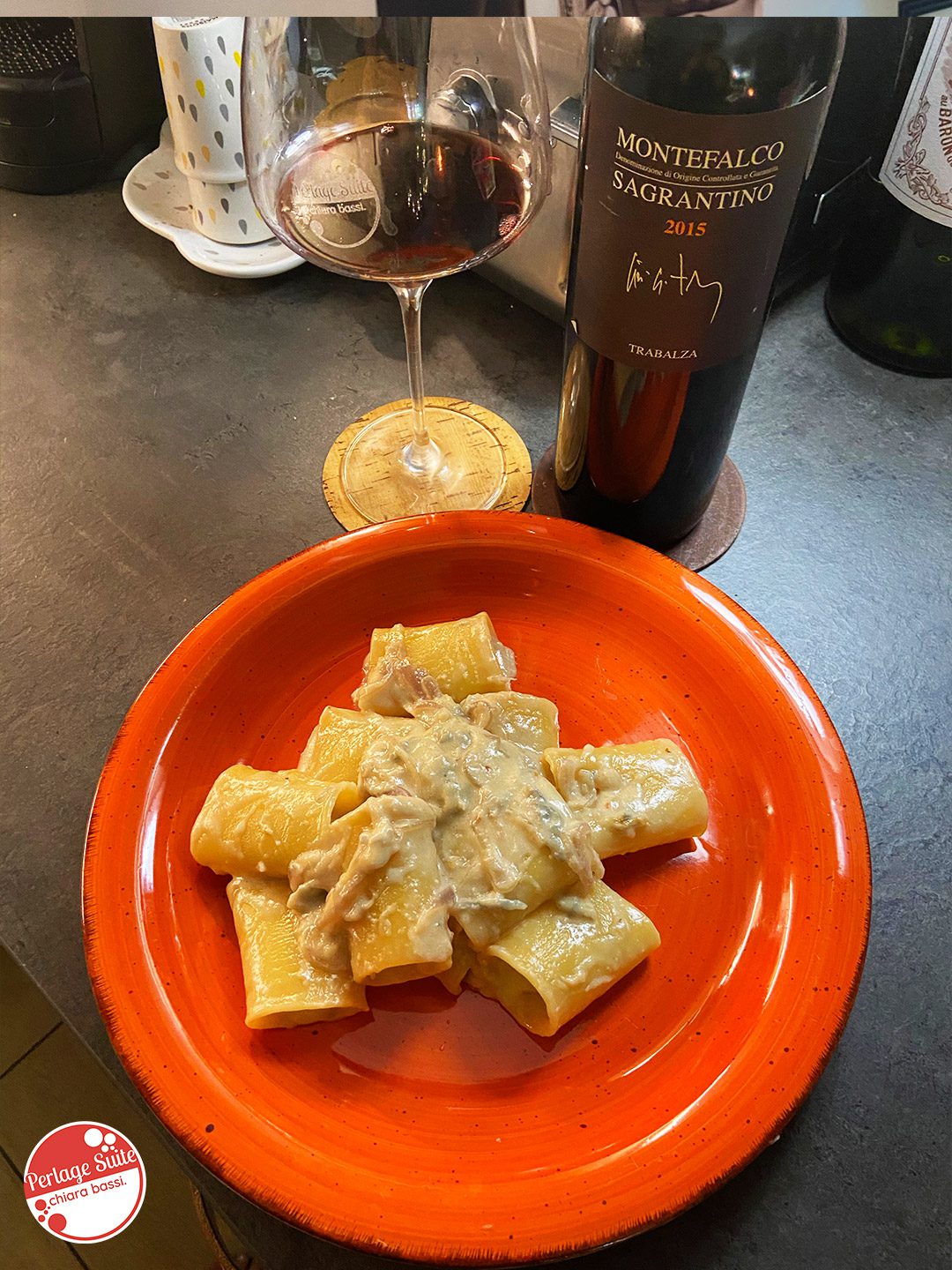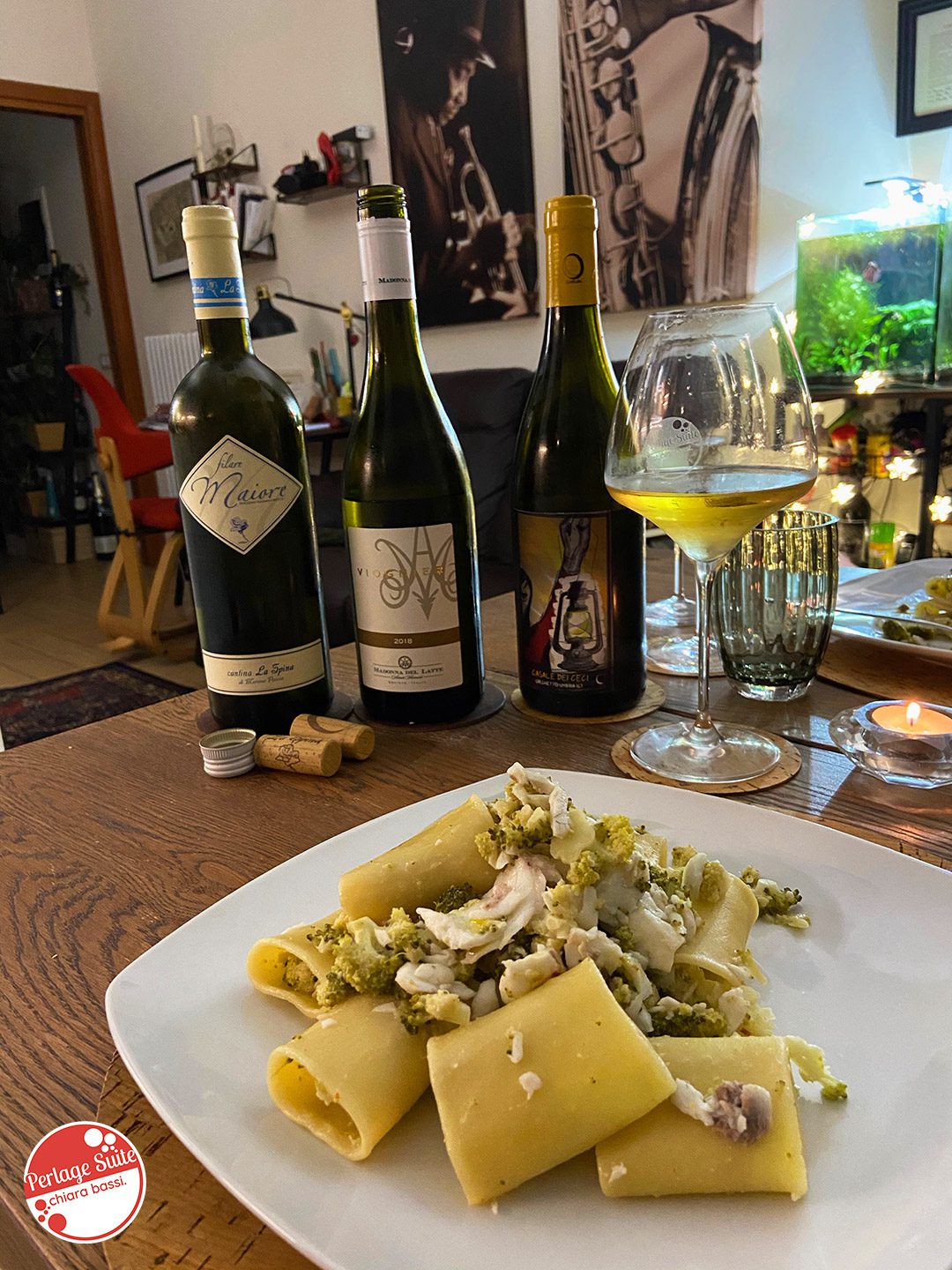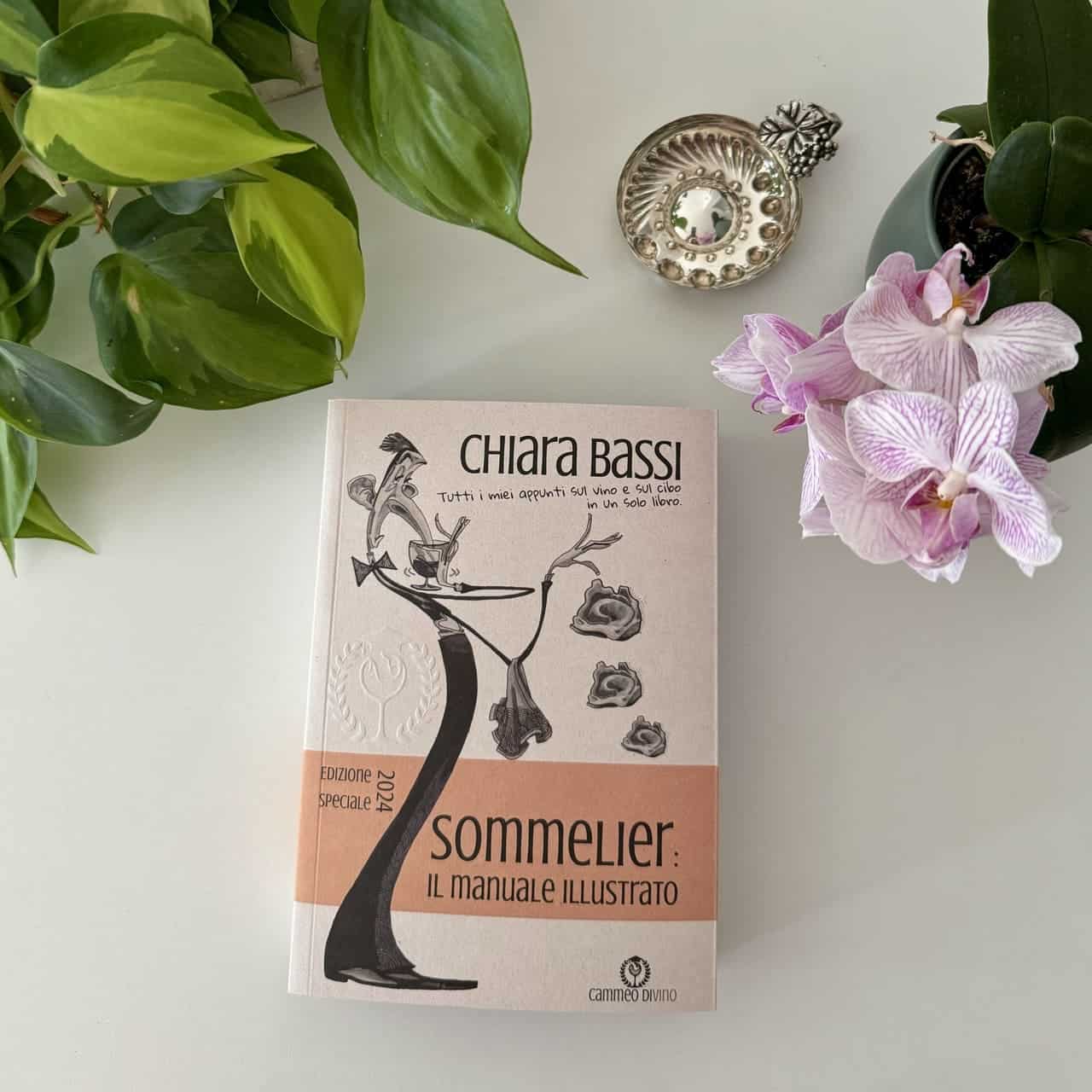Umbria is a region in Central Italy that often does not get the importance it deserves in the Italian wine scene. I Umbrian wines were a pleasant discovery for me, for which I thank my friend and colleague Federico Scarponi, Best Sommelier of Umbria 2011 for giving me a very interesting overview. Federico opened the small online wine shop 3T Selection with real gems from its territory (and beyond).
In fact, this year how about a few good bottles of Umbrian wine as a Christmas present? In Federico's wine shop, home delivery is free with a minimum of €59. Since with the new DCPM we cannot move outside our municipality exchanging Christmas presents personally will be impossible... 😩 so you might as well take advantage of the online shops (which I find very convenient anyway!).
Before studying Umbrian wines, let's do a little wine tasting together.
Umbrian wines: a roundup of tastings with Federico of 3T Selezione
Federico suggested six labels in his wine shop:
- Montefalco Sagrantino DOCG 2015 by Trabalza
- "Piantata' Umbria IGT Sangiovese 2018 by Cantina Cenci
- "Intenso' Umbria IGT Rosso 2015 by Tenuta Baroni
- [White wine] "Casale dei Ceci" Umbria IGT Grechetto by Lumiluna
- [White wine] "Filare Maiore" Umbria IGP Bianco 2019 by Cantina La Spina di Moreno Peccia
- [White wine] Viognier Umbria IGT 2018 by Madonna del Latte
Meanwhile, they are all wines of great quality. In particular Viognier is a textbook wine (wonderful with baked sea bass) while the Main Row is also interesting for its being a pure Trebbiano Spoletino. However, if I have to tell you what struck me among these white wines, it is undoubtedly theUmbria Grechetto IGT 2018 'Casale dei Ceci'. It has a beautiful intense and brilliant golden yellow colour. The nose is complex, with notes of ripe pear and some very pleasant oxidised hints. There is plenty of structure and flavour in the mouth, with a persistent almondy note. The value for money (it is on sale for €11) confirmed my appreciation. I paired it with paccheri with broccoli and slightly spicy sea bream and I must say it was a delicious dinner!
As for the reds, Intense is a perfect wine to discreetly accompany any dish that is not too flavoursome. It has reached its peak and is on the way to maturity. It is good value for money (it sells for 12€) and is to be drunk straight away. Although with the duck breast tagliata nothing excites me more than an Alsatian gewurztraminer served slightly chilled, it accompanied it very nicely. Planted is a very good Sangiovese, perfect to give Chianti Riserva diehards a chance for a change. Ready today, it is very smooth and quite fruity with notes of sweet spices and toast.
The gem among the red wines, however, is this one Sagrantino Montefalco 2015 by Trabalza which I found really wonderful! I paired it with paccheri with gorgonzola fondue and Tropea onions. It has an intense and deep ruby red colour, barely transparent. The nose is very complex, with notes of ink, bitter cocoa, black pepper, ripe mulberry, fresh almond and dwarf pine. In the mouth it is imposing, still rough but pleasant, fresh, tannic and very persistent. It is enjoyable now, but I am sure that in a few years it will be even better. Excellent value for money (€22.50 per bottle).
No more drinking now, back to studying!!!
.
Umbrian wines: history of the vine
The history of the vine, as testified by finds in Etruscan tombs, is very ancient. The Etruscans, present in Umbria since the 7th century B.C., cultivated vines in order to use the 'wine' above all in religious rites. The Romans gave us very contrasting news of Umbrian wines, testifying to the great difference in quality and appreciation that varied from area to area. For many centuries we lost all news of Umbrian wines, only to find again, as often happens, monks cultivating vines, especially the Cistercians and the followers of St Benedict of Norcia who started interesting productions in terms of quality and quantity. In 1549 Sante Lancerio, bottler to Pope Paul III Farnese, in his note on the pontiff's tastes, described the red wine 'sucano' from the Orvieto area as excellent. Around 1600 Andrea Bacci gave a broad if somewhat confused picture of Umbrian wines. Orvieto remained the workhorse and was already bottled in stuffed flasks at that time.
In the following centuries, news of Umbrian wines became increasingly rare except for Orvieto. Shortly before the destruction wrought by phylloxera, around 1850 we hear of red wines from Sangiovese and Sagrantino grapes in Montefalco, Trebbiano on the hills and Trebbianello on the plains. It was only after World War II that there was a renewal of Umbrian viticulture and the first denominations of origin appeared.
Here begins a partial reproduction of the "Chapter 4.2.13 Umbria" from page 197 of my paper book 'How to become a Sommelier: all my notes in one book'.
.
Umbrian wines: climate
- Temperatures = Depending on the area the climate is subcontinental temperate to Mediterranean temperate. Winters are not too cold and summers are warm, dry and windy.
- Rainfall = Not much rainand in any case the rainfall is well distributed throughout the year.
Umbrian wines: soils
- Where there are plains today there were lakes yesterday, later filled by alluvial deposits.
- Land clay-limestonewith marls, tuffs and volcanic rocks.
- In the Torgiano area, the reliefs have soils with lake and torrential sediments clays with lignite, sands and pebbles, plant and mammal remains from the ancient Tiber Lake.
Umbrian wines: grape varieties
- White berry = Canaiolo bianco, malvasia bianca lunga, trebbiano giallo, trebbiano toscano, grechettomalvasia bianca, riesling, trebbiano toscano, verdicchio bianco.
- Black berry = Ciliegiolo, gamay, montepulciano, merlot, sagrantino, sangiovese.
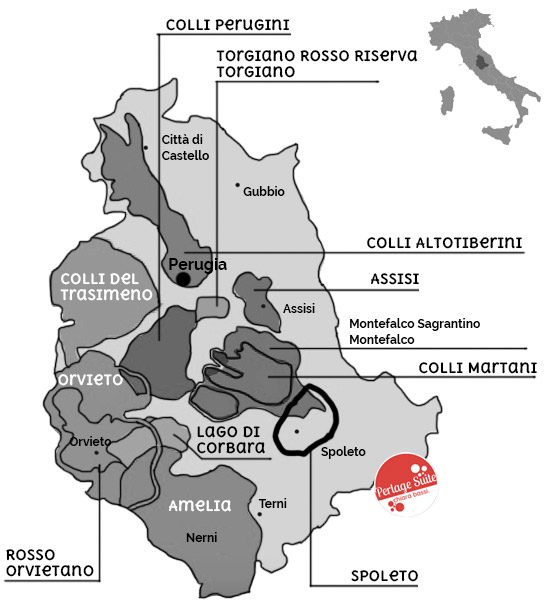
Umbrian wines: zones & key wines
- Assisi = A white wine made from Trebbiano Spoletino grapes rarely vinified alone, more often in combination with Trebbiano Toscano and Grechetto.
- ALTOTIBERINI HILLS = White wine from Trebbiano Toscano grapes and red wine from Sangiovese grapes, which can also be Riserva.
- Amerino hills = Interesting red wines from Sangiovese and Ciliegiolo.
- Lake Trasimeno Hills = White wines from Grechetto, Trebbiano Toscano and Verdello grapes.
- Martani Hills = Greco di Todi and Sagrantino.
- PERUGINI HILLS = Red wines from Sangiovese grapes with good acidity and hints of chocolate, black berry fruit and more or less sweet spices. Mineral white wines from Grechetto and Trebbiano Toscano grapes. Sparkling wines from international varieties. Vin Santo from Grechetto grapes.
- Orvieto = While dry white wines have on average an unimpressive organoleptic quality, mouldy wines on the other hand are very interesting.
- Montefalco = Sagrantino Montefalco, dry or passito.
- Torgiano = Torgiano Rosso Riserva from Sangiovese and Canaiolo Nero grapes. But this area also produces an excellent Torgiano Bianco from Trebbiano Toscano and Grechetto grapes.
Umbrian wines: Sub-zones, DOC & DOCG
[R] = Red; [B] = White; [T] = Rosé; [S] = Sparkling or Semi-sparkling; [*] = In progress
- DOCG = Montefalco Sagrantino [R], Torgiano Rosso Riserva [R].
- DOC = Amelia [R,B,T], Assisi [R,B,T], Colli Altotiberini [R,B,T,S], Colli del Trasimeno or Trasimeno Hills [R,B,T,S], Colli Martani [R,B,S], Colli Perugini [R,B,T,S], Lago di Corbara [R,B], Montefalco [R,B], Orvieto [B], Rosso Orvietano or Orvietano Rosso [R], Spoleto [B,S], Todi [R,B], Torgiano [R,B,T,S].
Umbrian wines: typical dishes & food and wine pairing
- Strangozzi with truffle = Long pasta made of semolina and water whose shape resembles thick noodles. They are sautéed in a pan where a clove of garlic has been browned in extra virgin olive oil and an anchovy melted. When cooked, the thinly-sliced truffle is added. In this preparation we have a dual bitterness given by the anchovy and the truffle, savouriness given by the anchovy and a great aromatic intensity and persistence given by the truffle. It goes well with a soft, structured and very persistent red wine as a Torgiano Rosso Riserva.
The content of this teaching article is a partial reproduction of "Chapter 4.2.13 Umbria" from page 197 of my printed book 'How to become a Sommelier: all my notes in one book' which you can buy now by clicking HERE.
As always, I hope you enjoyed this article and found it useful.
Cheers 🍷
Chiara

